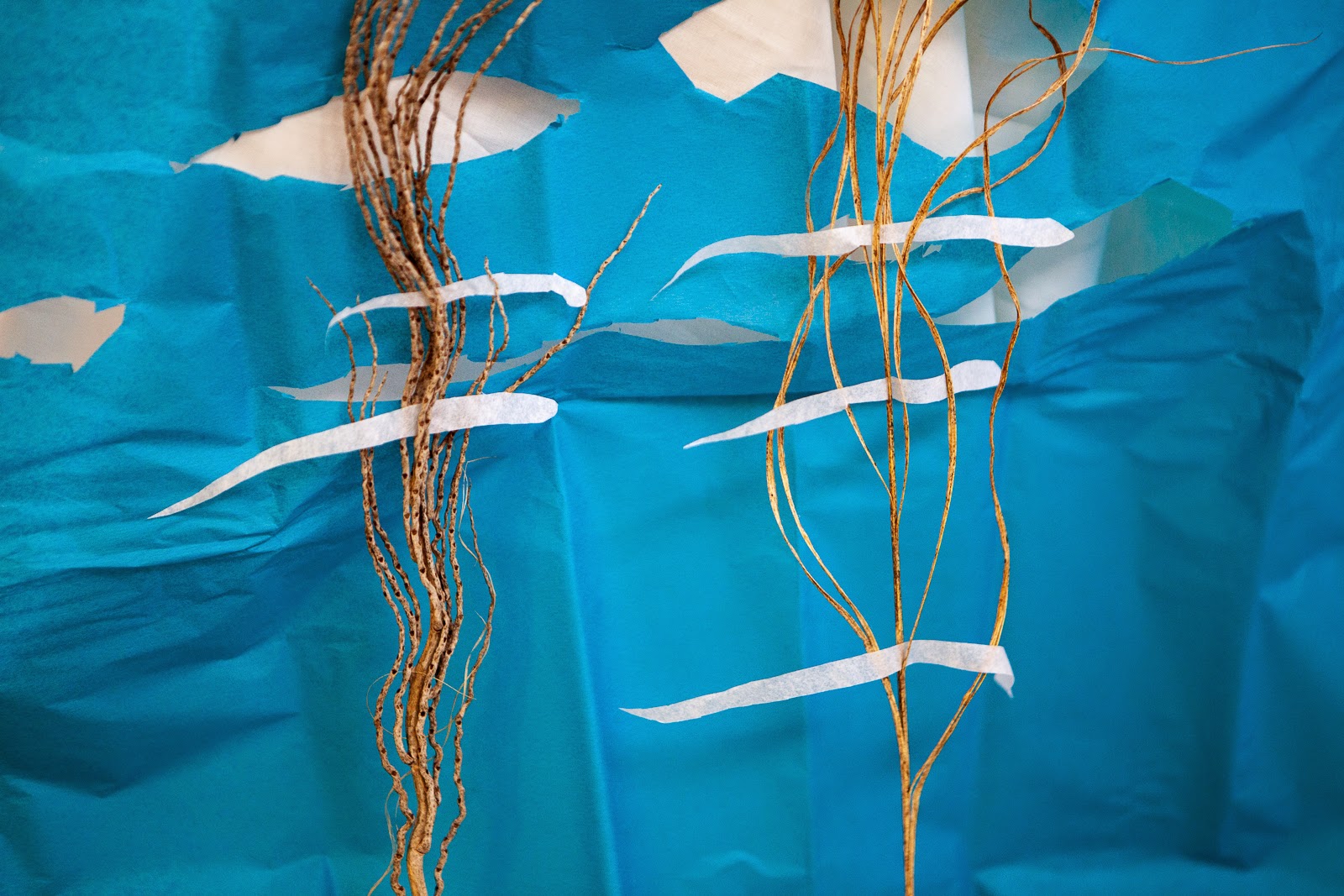Dwelling, of course, belongs to
the philosophical toolbox of Heidegger and expresses the most essential
dimension of Dasein, that of Being-in-the-world. Indeed, writes
Heidegger, “Dwelling...is the basic character of Being, in keeping with which
mortals exist.”30
“To perceive the landscape,” wrote social
anthropologist Tim Ingold in an influential essay published in 1993, “is...to
carry out an act of remembrance, and remembering is not so much a matter of
calling up an internal image stored in the mind as of engaging perceptually
with an environment that is itself pregnant with the past.”31 Calling
for the adoption of a “dwelling perspective” on landscape, Ingold develops
metaphors of visuality and aurality that…bring together the qualitative aspects
of lived space and time.i
Once again I find myself circling around the same set of ideas that have
preoccupied me for a good while now – but with each new space I work in, the
direction shifts a bit. This notion of
dwelling, of being, is a critical component.
When people ask me about my projects (although I hesitate to use that
term much), and what exactly it is I’m doing, I generally tell them I’m responding. Acknowledging and embracing this has led to
the particular approach I seem to have developed beginning with Goldfield Studies that naturally
carried into the Airfield
Studies. The working title for the
Icelandic segment (chapter?) of these field studies is currently, Mountainfield
Studies.
To be open to response can be tricky as, to a certain extent, it
discourages advance preparation, at least of the sort one might engage with to
prepare for the undertaking of a particular project, story or idea. I absolutely admire my fellow artists (many
of my closest friends work in this manner) that undertake ambitious bodies of
work that are anchored in factual research and rely on extensive analysis of
archival materials (I’m thinking right now specifically of Jessica Auer –
currently trekking through the Yukon territory, making work related to the 19th century
gold rushes in relation to the role photography played at this pivotal point
in history – and also of Ann Shelton, whose project, in a forest, had her
travel around the world making photographs of a heavily researched group of
trees, given out by Hitler during the 1936 Olympic Games).
I think I just have a different way of dwelling, and of coming to know
the content of a space. Sometimes I
worry I’m just coming at things in a half-assed manner, but it’s the only
authentic route I’ve yet to find, for myself.
Any rate, all of this blather is really just to say that I’m excited to
continue my post-response research through a new stack of readings, including
the Tim Ingold book referenced in the Lefebvre essay above, The Perception of
the Environment: Essays on Livelihood, Dwelling and Skill, as well as the
various books dealing with mountains mentioned in an earlier post, and most
likely a revisit to some old favorites (Schama, Bergson, Merleau-P…).
It’s been a bit difficult to get a sense of how the images I’m gathering
here in Iceland will come together as I really need to print them and pin them
on the wall, move them around, but there are a few things happening that I’m
paying attention to already – the junctures between spaces, heavy visual fields
of undulating matter – and the perceptual unease (for lack of a better term)
evoked.
Imagine a film
of the landscape shot over years, centuries, even millennia. Slightly speeded
up, plants appear to engage in very animal-like movements, trees flex their
limbs without any prompting from the winds. Speeding up rather more, glaciers
flow like rivers and even the earth begins to move. At greater speeds solid
rock bends, buckles and flows like molten metal. The world itself begins to
breathe. Thus the rhythmic pattern of human activities nests within a wider
pattern of activity for all animal life, which in turn nests within the pattern
of activity for all so-called living things, which nests within the
life-process of the world.ii
i From Martin Lefebvre’s “On Landscape in
Narrative Cinema”, see Lefebvre’s essay for his noted references, available HERE.
ii Tim Ingold, as quoted in the Lefebvre essay.
A few more studies are below.
Click on image for larger view.












































